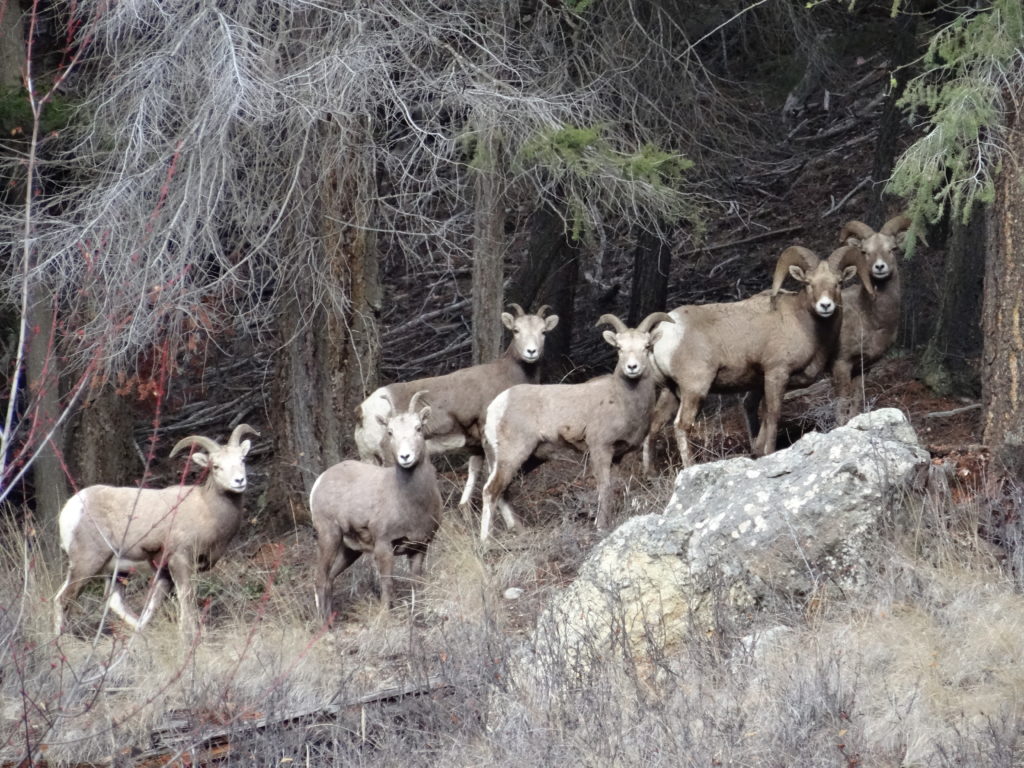
The California Bighorn Sheep get their name from the big horns that can be seen on the rams head.
The horns are brown, spiralled and curl back and down close to their head. Ewes have shorter and thinner horns. Their horns grow all year round but slower in the winter time. All sheep have a grey-brownish to dark brownish coat with a white nose patch, white on the legs and a distinctive white butt and a black tail. They can be found in various areas of the Chilcotin Ark, in dry climates and on south and south-west orientated timbered mountains with rolling hills and grasslands up to 2000 to 8000 ft. in elevation. Their hoofs are specially adapted to allow them to move on steep, rocky terrain. They are good at climbing and jumping around steep slopes and leaping off ledges of up to 20 feet high. They are equally adept at up- as downhill.
Adult Bighorn rams are about 3′ tall at the shoulder and usually weigh 200 to 300 lbs. Ewes are about 1/3 smaller than the rams.
California Bighorn sheep live expectency is 12 to 14 years, the oldest sheep ever recorded was about 20 years old.
Due to their slow digestion they can live off low nutritional grass. They move to their summer ranges in spring where they graze on plants like June grass, dwarf willow and pasture sage when the leaves are still in their early growth stage and especially nutritious. During the summer they eat grasses, sedge, herbs such as lupine, willows and other low shrubs. Their winter range mostly consists of low-elevation grasslands where vegetation includes bunchgrass, Ponderosa pine, Douglas fir, fescue, bluebunch wheatgrass. Bighorn sheep migrate 25 to 40 miles between their winter and summer ranges. Males and females occupy separate summer ranges and they generally lamb between their summer and winter ranges, in south-facing areas.
Both ewes and rams live in separate social communities where they live in groups of 5 to 20 or more except during the mating season. Seasonal range locations are used for generations and learned by following the older and experienced sheep, in ewe groups, there is a lead ewe that everyone follows. In ram groups there is a clear social structure and dominance hierarchy according to the size of horns. The sheep with the biggest horns is often in charge. The rams of similar horn size fight for control over the entire female herd and the breeding privileges.